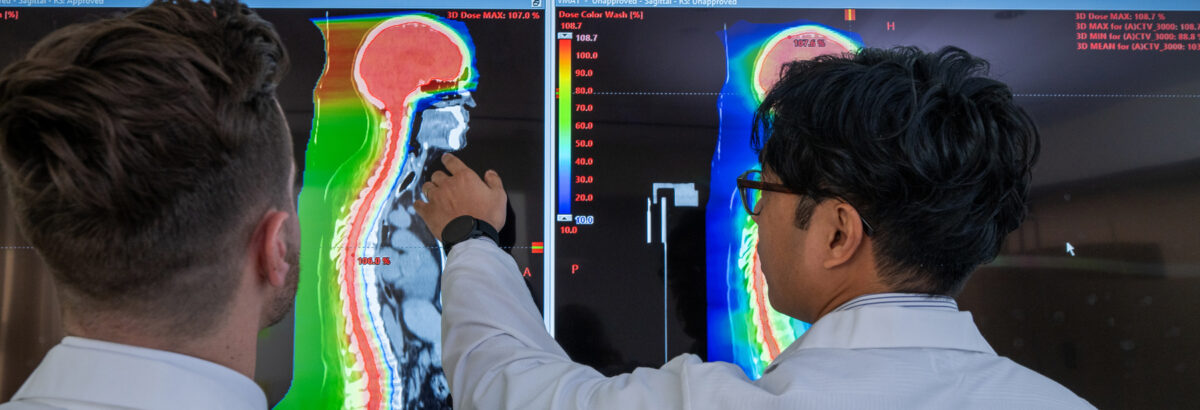Unmatched Precision in Radiation Therapy
Proton therapy can target head and neck tumors with unmatched precision while minimizing irradiation dose to the eyes, optic nerves, vocal cords, salivary glands, mouth, brain, jaw, and other nearby organs and structures. There is less risk of side effects like blindness, hearing loss, dry mouth, trouble swallowing, loss of taste or voice, and endocrine disorders.
Head and Neck Cancers We Treat Include
- Tonsil, base-of-tongue cancer, oral cavity, and other oropharynx cancers
- Nasopharynx cancers
- Nasal cavity and paranasal sinus cancers
- Throat cancers (nasopharyngeal/oropharyngeal)
- Hypopharynx cancers
- Tracheal cancers
- Lacrimal gland cancers
- Esthesioneuroblastomas
- Salivary gland cancers
- Skin with perineural invasion or lymph node metastases
- Tumors of the eye/orbit
- Thyroid cancers
- Recurrent head and neck tumors
Head and Neck Tumors Proton Therapy FAQs
Read our frequently asked questions about proton therapy for head and neck tumors.
Head and Neck Cancer Here and Gone
Joseph researched treatment options and was impressed by the science behind proton therapy as well as the potential for fewer side effects. He was referred to the New York Proton Center where the results of his treatment were quickly and dramatically evident.
Pencil Beam Scanning at the New York Proton Center
Patients at our center receive pencil beam scanning, a highly sophisticated and the most modern form of proton therapy. It uses an extremely narrow beam of protons to “paint” the intended radiation dose onto the tumor. The technology can target specific parts of the tumor with different radiation dose levels, while better protecting the surrounding normal tissues from irradiation.
Not All Proton Therapy Is Created Equal
Many other proton centers use “volumetric” beams that deliver a fixed quantity of energy to the entire tumor. But the pencil beam scanning technology at the New York Proton Center delivers “intensity-modulated proton therapy,” or IMPT.
Widely considered the most advanced form of proton therapy, IMPT can target different parts of the tumor with different radiation dose levels based on the prescription and the tumor’s exact location, while better protecting the surrounding normal tissues from irradiation. That’s particularly valuable when treating the most complicated tumors, those residing in the fissures of the head, neck and skull base.



